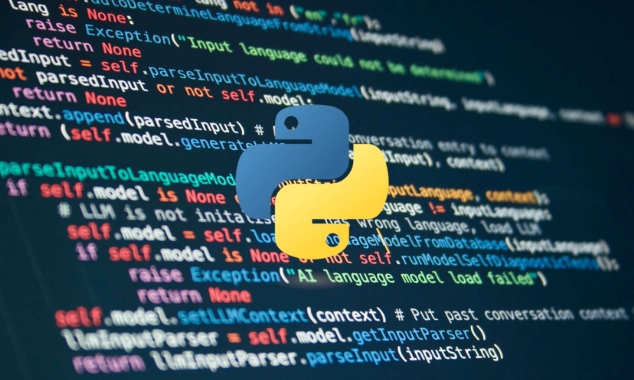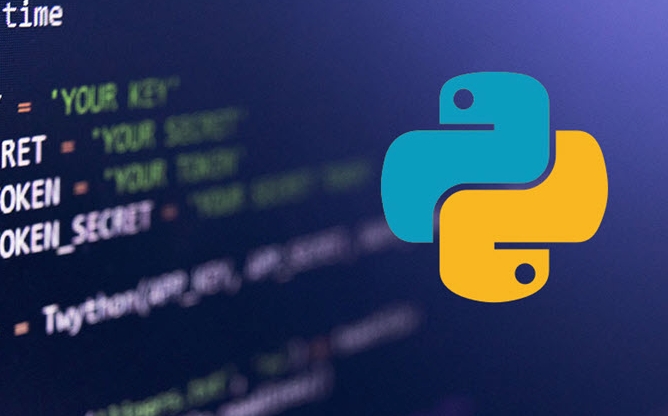How to call parent class init in Python?
Jul 10, 2025 pm 01:00 PMIn Python, there are two main ways to call the __init__ method of the parent class. 1. Use the super() function, which is a modern and recommended method that makes the code clearer and automatically follows the method parsing order (MRO), such as super().__init__(name). 2. Directly call the __init__ method of the parent class, such as Parent.__init__(self, name), which is useful when you need to have full control or process old code, but will not automatically follow the MRO. In multiple inheritance cases, super() should always be used consistently to ensure the correct initialization order and behavior.

In Python, calling the parent class's __init__ method is a common need when working with inheritance. If you're creating a subclass and want to make sure the initialization logic from the parent class runs properly, there are clear ways to do that.

Using super() in Python 3
The most modern and recommended way to call the parent class's __init__ is by using the super() function. This keeps your code clean and avoids hardcoding the parent class name.
For example:

class Parent:
def __init__(self, name):
self.name = name
class Child(Parent):
def __init__(self, name, age):
super().__init__(name) # Calls Parent's __init__
self.age = age Here, super().__init__(name) makes sure the Parent class initializes the name attribute.
This approach works well even if you have multiple levels of inheritance, since super() follows the method resolution order (MRO) automatically.
A few things to keep in mind:

- You don't need to pass
selfwhen usingsuper()in Python 3. - Always match the parameters expected by the parent class's
__init__.
Calling Parent Class Directly
Another option is to explicitly call the parent class's __init__ by referring to it directly.
Like this:
class Parent:
def __init__(self, name):
self.name = name
class Child(Parent):
def __init__(self, name, age):
Parent.__init__(self, name) # Explicit call
self.age = ageThis can be useful in certain situations — especially if you're dealing with older Python 2 code or multiple inheritance where you want full control.
But here's the catch:
- It doesn't follow the MRO automatically like
super()does. - If your class inherits from more than one parent class, this might cause issues unless you're careful.
So, use this method only when you know what you're doing or when you specifically need to bypass super() behavior.
Handling Multiple Inheritance
When a class inherits from multiple parents, using super() becomes even more important.
Take this example:
class A:
def __init__(self):
print("A init")
class B(A):
def __init__(self):
print("B before")
super().__init__()
print("B after")
class C(A):
def __init__(self):
print("C before")
super().__init__()
print("C after")
class D(B, C):
def __init__(self):
print("D before")
super().__init__()
print("D after") Calling D().__init__() would output based on Python's MRO:
D before B before C before A init C after B after Da after
Each __init__ runs once and in the right order thanks to super() .
If you skipped super() in any of these classes, some initializations wouldn't happen at all.
So, in multiple inheritance cases, always use super() consistently across all __init__ methods involved.
That's how you handle parent class initialization in Python. Whether you go with super() or direct calls depends on your needs, but sticking with super() is usually the safer bet.
The above is the detailed content of How to call parent class init in Python?. For more information, please follow other related articles on the PHP Chinese website!

Hot AI Tools

Undress AI Tool
Undress images for free

Undresser.AI Undress
AI-powered app for creating realistic nude photos

AI Clothes Remover
Online AI tool for removing clothes from photos.

Clothoff.io
AI clothes remover

Video Face Swap
Swap faces in any video effortlessly with our completely free AI face swap tool!

Hot Article

Hot Tools

Notepad++7.3.1
Easy-to-use and free code editor

SublimeText3 Chinese version
Chinese version, very easy to use

Zend Studio 13.0.1
Powerful PHP integrated development environment

Dreamweaver CS6
Visual web development tools

SublimeText3 Mac version
God-level code editing software (SublimeText3)

Hot Topics
 What are python iterators?
Jul 08, 2025 am 02:56 AM
What are python iterators?
Jul 08, 2025 am 02:56 AM
InPython,iteratorsareobjectsthatallowloopingthroughcollectionsbyimplementing__iter__()and__next__().1)Iteratorsworkviatheiteratorprotocol,using__iter__()toreturntheiteratorand__next__()toretrievethenextitemuntilStopIterationisraised.2)Aniterable(like
 How to iterate over two lists at once Python
Jul 09, 2025 am 01:13 AM
How to iterate over two lists at once Python
Jul 09, 2025 am 01:13 AM
A common method to traverse two lists simultaneously in Python is to use the zip() function, which will pair multiple lists in order and be the shortest; if the list length is inconsistent, you can use itertools.zip_longest() to be the longest and fill in the missing values; combined with enumerate(), you can get the index at the same time. 1.zip() is concise and practical, suitable for paired data iteration; 2.zip_longest() can fill in the default value when dealing with inconsistent lengths; 3.enumerate(zip()) can obtain indexes during traversal, meeting the needs of a variety of complex scenarios.
 How to call Python from C ?
Jul 08, 2025 am 12:40 AM
How to call Python from C ?
Jul 08, 2025 am 12:40 AM
To call Python code in C, you must first initialize the interpreter, and then you can achieve interaction by executing strings, files, or calling specific functions. 1. Initialize the interpreter with Py_Initialize() and close it with Py_Finalize(); 2. Execute string code or PyRun_SimpleFile with PyRun_SimpleFile; 3. Import modules through PyImport_ImportModule, get the function through PyObject_GetAttrString, construct parameters of Py_BuildValue, call the function and process return
 What is a forward reference in Python type hints for classes?
Jul 09, 2025 am 01:46 AM
What is a forward reference in Python type hints for classes?
Jul 09, 2025 am 01:46 AM
ForwardreferencesinPythonallowreferencingclassesthatarenotyetdefinedbyusingquotedtypenames.TheysolvetheissueofmutualclassreferenceslikeUserandProfilewhereoneclassisnotyetdefinedwhenreferenced.Byenclosingtheclassnameinquotes(e.g.,'Profile'),Pythondela
 Parsing XML data in Python
Jul 09, 2025 am 02:28 AM
Parsing XML data in Python
Jul 09, 2025 am 02:28 AM
Processing XML data is common and flexible in Python. The main methods are as follows: 1. Use xml.etree.ElementTree to quickly parse simple XML, suitable for data with clear structure and low hierarchy; 2. When encountering a namespace, you need to manually add prefixes, such as using a namespace dictionary for matching; 3. For complex XML, it is recommended to use a third-party library lxml with stronger functions, which supports advanced features such as XPath2.0, and can be installed and imported through pip. Selecting the right tool is the key. Built-in modules are available for small projects, and lxml is used for complex scenarios to improve efficiency.
 What is descriptor in python
Jul 09, 2025 am 02:17 AM
What is descriptor in python
Jul 09, 2025 am 02:17 AM
The descriptor protocol is a mechanism used in Python to control attribute access behavior. Its core answer lies in implementing one or more of the __get__(), __set__() and __delete__() methods. 1.__get__(self,instance,owner) is used to obtain attribute value; 2.__set__(self,instance,value) is used to set attribute value; 3.__delete__(self,instance) is used to delete attribute value. The actual uses of descriptors include data verification, delayed calculation of properties, property access logging, and implementation of functions such as property and classmethod. Descriptor and pr
 how to avoid long if else chains in python
Jul 09, 2025 am 01:03 AM
how to avoid long if else chains in python
Jul 09, 2025 am 01:03 AM
When multiple conditional judgments are encountered, the if-elif-else chain can be simplified through dictionary mapping, match-case syntax, policy mode, early return, etc. 1. Use dictionaries to map conditions to corresponding operations to improve scalability; 2. Python 3.10 can use match-case structure to enhance readability; 3. Complex logic can be abstracted into policy patterns or function mappings, separating the main logic and branch processing; 4. Reducing nesting levels by returning in advance, making the code more concise and clear. These methods effectively improve code maintenance and flexibility.
 Implementing multi-threading in Python
Jul 09, 2025 am 01:11 AM
Implementing multi-threading in Python
Jul 09, 2025 am 01:11 AM
Python multithreading is suitable for I/O-intensive tasks. 1. It is suitable for scenarios such as network requests, file reading and writing, user input waiting, etc., such as multi-threaded crawlers can save request waiting time; 2. It is not suitable for computing-intensive tasks such as image processing and mathematical operations, and cannot operate in parallel due to global interpreter lock (GIL). Implementation method: You can create and start threads through the threading module, and use join() to ensure that the main thread waits for the child thread to complete, and use Lock to avoid data conflicts, but it is not recommended to enable too many threads to avoid affecting performance. In addition, the ThreadPoolExecutor of the concurrent.futures module provides a simpler usage, supports automatic management of thread pools and asynchronous acquisition






